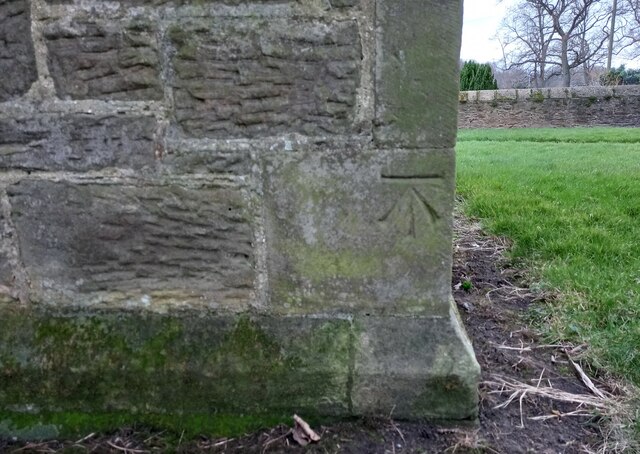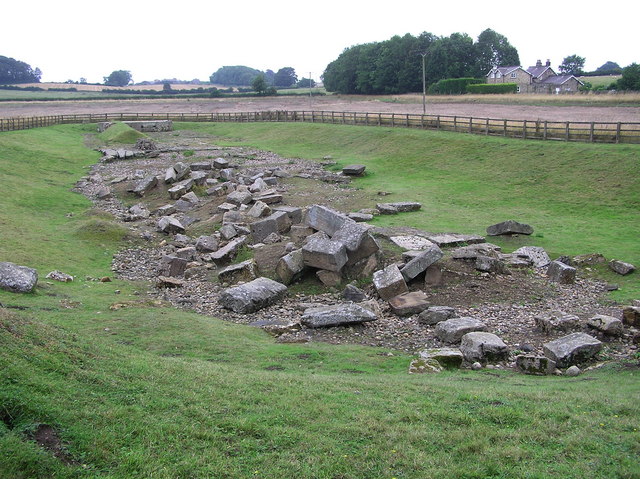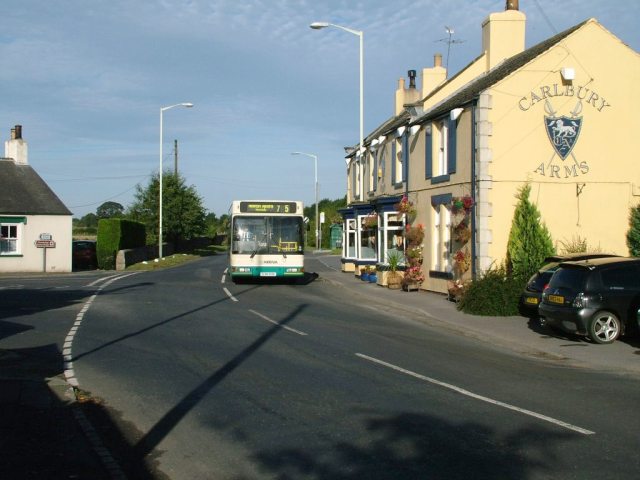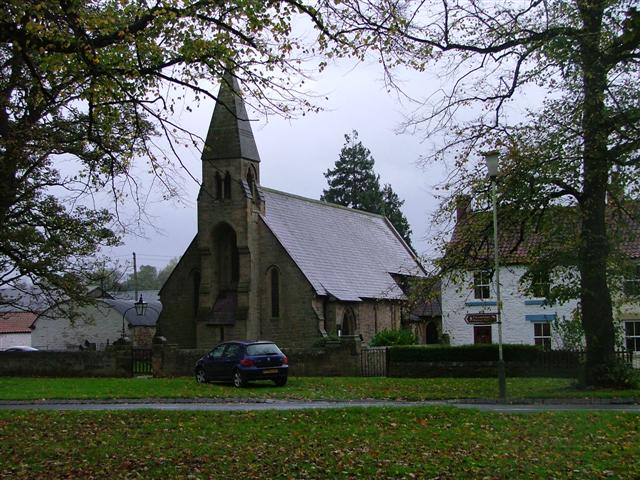Carlbury
Settlement in Durham
England
Carlbury

Carlbury is a small village located in County Durham, England. Situated approximately 6 miles southwest of the town of Darlington, it is nestled amidst the picturesque countryside and offers a tranquil and idyllic setting.
The village is primarily known for its historic significance, with records dating back to the Domesday Book of 1086. Carlbury Hall, a Grade II listed building, stands as a prominent landmark and is a testament to the village's rich heritage. The hall was originally built in the early 18th century and has since been refurbished, maintaining its original architectural charm.
Despite its small size, Carlbury boasts a close-knit community with a strong sense of camaraderie. The village is home to a small number of residents who are proud of their surroundings and actively engage in local events and initiatives. The Carlbury Community Centre serves as a hub for various activities and gatherings, contributing to the village's vibrant social scene.
The natural beauty surrounding Carlbury is a major draw for visitors and residents alike. The village is situated in close proximity to the River Tees, offering stunning views and opportunities for outdoor activities such as fishing and hiking. The nearby countryside also provides ample opportunities for picturesque walks and exploration.
While Carlbury may be small in size, its rich history, strong community spirit, and breathtaking natural surroundings make it a hidden gem within the Durham region.
If you have any feedback on the listing, please let us know in the comments section below.
Carlbury Images
Images are sourced within 2km of 54.53865/-1.673278 or Grid Reference NZ2115. Thanks to Geograph Open Source API. All images are credited.
![Piercebridge Roman features [1] This information board about the Roman Bridge is located in the car park.
Piercebridge is a village in the county of Durham, some 5 miles west of Darlington. The village overlies a Roman fort built circa 265 where Dere Street, the Roman road from York to Newstead, crossed the River Tees. The fort was occupied until the fifth century and a civilian settlement was established to the east of the fort. The river has changed course and the remains of a Roman bridge over the river lie about a quarter of a mile east of the current bridge. Most of the site of the village is a Scheduled Ancient Monument, with details at: <span class="nowrap"><a title="https://historicengland.org.uk/listing/the-list/list-entry/1002365" rel="nofollow ugc noopener" href="https://historicengland.org.uk/listing/the-list/list-entry/1002365">Link</a><img style="margin-left:2px;" alt="External link" title="External link - shift click to open in new window" src="https://s1.geograph.org.uk/img/external.png" width="10" height="10"/></span>](https://s0.geograph.org.uk/geophotos/07/31/89/7318920_88671c65.jpg)
![Piercebridge features [1] This path leads to the remains of the Roman bridge.
Piercebridge is a village in the county of Durham, some 5 miles west of Darlington. The village overlies a Roman fort built circa 265 where Dere Street, the Roman road from York to Newstead, crossed the River Tees. The fort was occupied until the fifth century and a civilian settlement was established to the east of the fort. The river has changed course and the remains of a Roman bridge over the river lie about a quarter of a mile east of the current bridge. Most of the site of the village is a Scheduled Ancient Monument, with details at: <span class="nowrap"><a title="https://historicengland.org.uk/listing/the-list/list-entry/1002365" rel="nofollow ugc noopener" href="https://historicengland.org.uk/listing/the-list/list-entry/1002365">Link</a><img style="margin-left:2px;" alt="External link" title="External link - shift click to open in new window" src="https://s1.geograph.org.uk/img/external.png" width="10" height="10"/></span>](https://s1.geograph.org.uk/geophotos/07/31/89/7318921_7bafcd77.jpg)
![Piercebridge Roman features [2] The original Roman timber bridge was destroyed in a flood and a replacement stone bridge was built some 200 metres downstream. The river has since changed course and the remains of the stone bridge, seen here, were discovered in the 1970s. The site is a Scheduled Ancient Monument with details at: <span class="nowrap"><a title="https://historicengland.org.uk/listing/the-list/list-entry/1004062" rel="nofollow ugc noopener" href="https://historicengland.org.uk/listing/the-list/list-entry/1004062">Link</a><img style="margin-left:2px;" alt="External link" title="External link - shift click to open in new window" src="https://s1.geograph.org.uk/img/external.png" width="10" height="10"/></span>
Piercebridge is a village in the county of Durham, some 5 miles west of Darlington. The village overlies a Roman fort built circa 265 where Dere Street, the Roman road from York to Newstead, crossed the River Tees. The fort was occupied until the fifth century and a civilian settlement was established to the east of the fort. The river has changed course and the remains of a Roman bridge over the river lie about a quarter of a mile east of the current bridge. Most of the site of the village is a Scheduled Ancient Monument, with details at: <span class="nowrap"><a title="https://historicengland.org.uk/listing/the-list/list-entry/1002365" rel="nofollow ugc noopener" href="https://historicengland.org.uk/listing/the-list/list-entry/1002365">Link</a><img style="margin-left:2px;" alt="External link" title="External link - shift click to open in new window" src="https://s1.geograph.org.uk/img/external.png" width="10" height="10"/></span>](https://s2.geograph.org.uk/geophotos/07/31/89/7318922_4fbb09c8.jpg)
![Piercebridge Roman features [3] The original Roman timber bridge was destroyed in a flood and a replacement stone bridge was built some 200 metres downstream. The river has since changed course and the remains of the stone bridge, seen here, were discovered in the 1970s. The site is a Scheduled Ancient Monument with details at: <span class="nowrap"><a title="https://historicengland.org.uk/listing/the-list/list-entry/1004062" rel="nofollow ugc noopener" href="https://historicengland.org.uk/listing/the-list/list-entry/1004062">Link</a><img style="margin-left:2px;" alt="External link" title="External link - shift click to open in new window" src="https://s1.geograph.org.uk/img/external.png" width="10" height="10"/></span>
Piercebridge is a village in the county of Durham, some 5 miles west of Darlington. The village overlies a Roman fort built circa 265 where Dere Street, the Roman road from York to Newstead, crossed the River Tees. The fort was occupied until the fifth century and a civilian settlement was established to the east of the fort. The river has changed course and the remains of a Roman bridge over the river lie about a quarter of a mile east of the current bridge. Most of the site of the village is a Scheduled Ancient Monument, with details at: <span class="nowrap"><a title="https://historicengland.org.uk/listing/the-list/list-entry/1002365" rel="nofollow ugc noopener" href="https://historicengland.org.uk/listing/the-list/list-entry/1002365">Link</a><img style="margin-left:2px;" alt="External link" title="External link - shift click to open in new window" src="https://s1.geograph.org.uk/img/external.png" width="10" height="10"/></span>](https://s0.geograph.org.uk/geophotos/07/31/89/7318924_111a4246.jpg)
![Piercebridge Roman features [4] The original Roman timber bridge was destroyed in a flood and a replacement stone bridge was built some 200 metres downstream. The river has since changed course and the remains of the stone bridge, seen here, were discovered in the 1970s. The site is a Scheduled Ancient Monument with details at: <span class="nowrap"><a title="https://historicengland.org.uk/listing/the-list/list-entry/1004062" rel="nofollow ugc noopener" href="https://historicengland.org.uk/listing/the-list/list-entry/1004062">Link</a><img style="margin-left:2px;" alt="External link" title="External link - shift click to open in new window" src="https://s1.geograph.org.uk/img/external.png" width="10" height="10"/></span>
Piercebridge is a village in the county of Durham, some 5 miles west of Darlington. The village overlies a Roman fort built circa 265 where Dere Street, the Roman road from York to Newstead, crossed the River Tees. The fort was occupied until the fifth century and a civilian settlement was established to the east of the fort. The river has changed course and the remains of a Roman bridge over the river lie about a quarter of a mile east of the current bridge. Most of the site of the village is a Scheduled Ancient Monument, with details at: <span class="nowrap"><a title="https://historicengland.org.uk/listing/the-list/list-entry/1002365" rel="nofollow ugc noopener" href="https://historicengland.org.uk/listing/the-list/list-entry/1002365">Link</a><img style="margin-left:2px;" alt="External link" title="External link - shift click to open in new window" src="https://s1.geograph.org.uk/img/external.png" width="10" height="10"/></span>](https://s3.geograph.org.uk/geophotos/07/31/89/7318927_206de143.jpg)
![Piercebridge Roman features [5] The original Roman timber bridge was destroyed in a flood and a replacement stone bridge was built some 200 metres downstream. The river has since changed course and the remains of the stone bridge, seen here, were discovered in the 1970s. The site is a Scheduled Ancient Monument with details at: <span class="nowrap"><a title="https://historicengland.org.uk/listing/the-list/list-entry/1004062" rel="nofollow ugc noopener" href="https://historicengland.org.uk/listing/the-list/list-entry/1004062">Link</a><img style="margin-left:2px;" alt="External link" title="External link - shift click to open in new window" src="https://s1.geograph.org.uk/img/external.png" width="10" height="10"/></span>
Piercebridge is a village in the county of Durham, some 5 miles west of Darlington. The village overlies a Roman fort built circa 265 where Dere Street, the Roman road from York to Newstead, crossed the River Tees. The fort was occupied until the fifth century and a civilian settlement was established to the east of the fort. The river has changed course and the remains of a Roman bridge over the river lie about a quarter of a mile east of the current bridge. Most of the site of the village is a Scheduled Ancient Monument, with details at: <span class="nowrap"><a title="https://historicengland.org.uk/listing/the-list/list-entry/1002365" rel="nofollow ugc noopener" href="https://historicengland.org.uk/listing/the-list/list-entry/1002365">Link</a><img style="margin-left:2px;" alt="External link" title="External link - shift click to open in new window" src="https://s1.geograph.org.uk/img/external.png" width="10" height="10"/></span>](https://s3.geograph.org.uk/geophotos/07/31/89/7318931_745ef86e.jpg)
![Piercebridge Roman features [6] The original Roman timber bridge was destroyed in a flood and a replacement stone bridge was built some 200 metres downstream. The river has since changed course and the remains of the stone bridge, seen here, were discovered in the 1970s. The site is a Scheduled Ancient Monument with details at: <span class="nowrap"><a title="https://historicengland.org.uk/listing/the-list/list-entry/1004062" rel="nofollow ugc noopener" href="https://historicengland.org.uk/listing/the-list/list-entry/1004062">Link</a><img style="margin-left:2px;" alt="External link" title="External link - shift click to open in new window" src="https://s1.geograph.org.uk/img/external.png" width="10" height="10"/></span>
Piercebridge is a village in the county of Durham, some 5 miles west of Darlington. The village overlies a Roman fort built circa 265 where Dere Street, the Roman road from York to Newstead, crossed the River Tees. The fort was occupied until the fifth century and a civilian settlement was established to the east of the fort. The river has changed course and the remains of a Roman bridge over the river lie about a quarter of a mile east of the current bridge. Most of the site of the village is a Scheduled Ancient Monument, with details at: <span class="nowrap"><a title="https://historicengland.org.uk/listing/the-list/list-entry/1002365" rel="nofollow ugc noopener" href="https://historicengland.org.uk/listing/the-list/list-entry/1002365">Link</a><img style="margin-left:2px;" alt="External link" title="External link - shift click to open in new window" src="https://s1.geograph.org.uk/img/external.png" width="10" height="10"/></span>](https://s1.geograph.org.uk/geophotos/07/31/89/7318933_034b3441.jpg)
![Piercebridge features [2] This path leads back to the village from the remains of the Roman bridge.
Piercebridge is a village in the county of Durham, some 5 miles west of Darlington. The village overlies a Roman fort built circa 265 where Dere Street, the Roman road from York to Newstead, crossed the River Tees. The fort was occupied until the fifth century and a civilian settlement was established to the east of the fort. The river has changed course and the remains of a Roman bridge over the river lie about a quarter of a mile east of the current bridge. Most of the site of the village is a Scheduled Ancient Monument, with details at: <span class="nowrap"><a title="https://historicengland.org.uk/listing/the-list/list-entry/1002365" rel="nofollow ugc noopener" href="https://historicengland.org.uk/listing/the-list/list-entry/1002365">Link</a><img style="margin-left:2px;" alt="External link" title="External link - shift click to open in new window" src="https://s1.geograph.org.uk/img/external.png" width="10" height="10"/></span>](https://s0.geograph.org.uk/geophotos/07/31/89/7318936_9a643aa7.jpg)
![Piercebridge buildings [1] A former coaching inn, the George Hotel has ranges from the 17th, 18th and 19th centuries, with later alterations and additions. Constructed of rendered rubble stone under tile roofs. The 17th century range is on the left, the 18th century range is in the centre and the 19th century range is to the right. Some early original internal features remain. Listed, grade II, with details at: <span class="nowrap"><a title="https://historicengland.org.uk/listing/the-list/list-entry/1179351" rel="nofollow ugc noopener" href="https://historicengland.org.uk/listing/the-list/list-entry/1179351">Link</a><img style="margin-left:2px;" alt="External link" title="External link - shift click to open in new window" src="https://s1.geograph.org.uk/img/external.png" width="10" height="10"/></span>
Piercebridge is a village in the county of Durham, some 5 miles west of Darlington. The village overlies a Roman fort built circa 265 where Dere Street, the Roman road from York to Newstead, crossed the River Tees. The fort was occupied until the fifth century and a civilian settlement was established to the east of the fort. The river has changed course and the remains of a Roman bridge over the river lie about a quarter of a mile east of the current bridge. Most of the site of the village is a Scheduled Ancient Monument, with details at: <span class="nowrap"><a title="https://historicengland.org.uk/listing/the-list/list-entry/1002365" rel="nofollow ugc noopener" href="https://historicengland.org.uk/listing/the-list/list-entry/1002365">Link</a><img style="margin-left:2px;" alt="External link" title="External link - shift click to open in new window" src="https://s1.geograph.org.uk/img/external.png" width="10" height="10"/></span>](https://s1.geograph.org.uk/geophotos/07/31/89/7318949_b170d441.jpg)
![Piercebridge features [3] Piercebridge Bridge carries the B6275 road over the River Tees. The bridge was built in the early 16th century and widened on the downstream side in 1781. Constructed of dressed and ashlar sandstone. Both sides have cutwaters rising to form pedestrian refuges. See also <a href="https://www.geograph.org.uk/photo/7319718">NZ2115 : Piercebridge features [4]</a> Listed, grade II*, with details at: <span class="nowrap"><a title="https://historicengland.org.uk/listing/the-list/list-entry/1145843" rel="nofollow ugc noopener" href="https://historicengland.org.uk/listing/the-list/list-entry/1145843">Link</a><img style="margin-left:2px;" alt="External link" title="External link - shift click to open in new window" src="https://s1.geograph.org.uk/img/external.png" width="10" height="10"/></span> A Scheduled Ancient Monument with details at: <span class="nowrap"><a title="https://historicengland.org.uk/listing/the-list/list-entry/1002344" rel="nofollow ugc noopener" href="https://historicengland.org.uk/listing/the-list/list-entry/1002344">Link</a><img style="margin-left:2px;" alt="External link" title="External link - shift click to open in new window" src="https://s1.geograph.org.uk/img/external.png" width="10" height="10"/></span>
Piercebridge is a village in the county of Durham, some 5 miles west of Darlington. The village overlies a Roman fort built circa 265 where Dere Street, the Roman road from York to Newstead, crossed the River Tees. The fort was occupied until the fifth century and a civilian settlement was established to the east of the fort. The river has changed course and the remains of a Roman bridge over the river lie about a quarter of a mile east of the current bridge. Most of the site of the village is a Scheduled Ancient Monument, with details at: <span class="nowrap"><a title="https://historicengland.org.uk/listing/the-list/list-entry/1002365" rel="nofollow ugc noopener" href="https://historicengland.org.uk/listing/the-list/list-entry/1002365">Link</a><img style="margin-left:2px;" alt="External link" title="External link - shift click to open in new window" src="https://s1.geograph.org.uk/img/external.png" width="10" height="10"/></span>](https://s1.geograph.org.uk/geophotos/07/31/97/7319717_3c8ee19b.jpg)
![Piercebridge features [4] Piercebridge Bridge carries the B6275 road over the River Tees. The bridge was built in the early 16th century and widened on the downstream side in 1781. Constructed of dressed and ashlar sandstone. Both sides have cutwaters rising to form pedestrian refuges. See also <a href="https://www.geograph.org.uk/photo/7319717">NZ2115 : Piercebridge features [3]</a> Listed, grade II*, with details at: <span class="nowrap"><a title="https://historicengland.org.uk/listing/the-list/list-entry/1145843" rel="nofollow ugc noopener" href="https://historicengland.org.uk/listing/the-list/list-entry/1145843">Link</a><img style="margin-left:2px;" alt="External link" title="External link - shift click to open in new window" src="https://s1.geograph.org.uk/img/external.png" width="10" height="10"/></span> A Scheduled Ancient Monument with details at: <span class="nowrap"><a title="https://historicengland.org.uk/listing/the-list/list-entry/1002344" rel="nofollow ugc noopener" href="https://historicengland.org.uk/listing/the-list/list-entry/1002344">Link</a><img style="margin-left:2px;" alt="External link" title="External link - shift click to open in new window" src="https://s1.geograph.org.uk/img/external.png" width="10" height="10"/></span>
Piercebridge is a village in the county of Durham, some 5 miles west of Darlington. The village overlies a Roman fort built circa 265 where Dere Street, the Roman road from York to Newstead, crossed the River Tees. The fort was occupied until the fifth century and a civilian settlement was established to the east of the fort. The river has changed course and the remains of a Roman bridge over the river lie about a quarter of a mile east of the current bridge. Most of the site of the village is a Scheduled Ancient Monument, with details at: <span class="nowrap"><a title="https://historicengland.org.uk/listing/the-list/list-entry/1002365" rel="nofollow ugc noopener" href="https://historicengland.org.uk/listing/the-list/list-entry/1002365">Link</a><img style="margin-left:2px;" alt="External link" title="External link - shift click to open in new window" src="https://s1.geograph.org.uk/img/external.png" width="10" height="10"/></span>](https://s2.geograph.org.uk/geophotos/07/31/97/7319718_609a1c9d.jpg)
![Piercebridge features [5] The River Tees, looking upstream from Piercebridge Bridge <a href="https://www.geograph.org.uk/photo/7319717">NZ2115 : Piercebridge features [3]</a> and <a href="https://www.geograph.org.uk/photo/7319718">NZ2115 : Piercebridge features [4]</a>.
Piercebridge is a village in the county of Durham, some 5 miles west of Darlington. The village overlies a Roman fort built circa 265 where Dere Street, the Roman road from York to Newstead, crossed the River Tees. The fort was occupied until the fifth century and a civilian settlement was established to the east of the fort. The river has changed course and the remains of a Roman bridge over the river lie about a quarter of a mile east of the current bridge. Most of the site of the village is a Scheduled Ancient Monument, with details at: <span class="nowrap"><a title="https://historicengland.org.uk/listing/the-list/list-entry/1002365" rel="nofollow ugc noopener" href="https://historicengland.org.uk/listing/the-list/list-entry/1002365">Link</a><img style="margin-left:2px;" alt="External link" title="External link - shift click to open in new window" src="https://s1.geograph.org.uk/img/external.png" width="10" height="10"/></span>](https://s3.geograph.org.uk/geophotos/07/31/97/7319719_5d028d08.jpg)
![Piercebridge features [6] The River Tees, looking downstream from Piercebridge Bridge <a href="https://www.geograph.org.uk/photo/7319717">NZ2115 : Piercebridge features [3]</a> and <a href="https://www.geograph.org.uk/photo/7319718">NZ2115 : Piercebridge features [4]</a>.
Piercebridge is a village in the county of Durham, some 5 miles west of Darlington. The village overlies a Roman fort built circa 265 where Dere Street, the Roman road from York to Newstead, crossed the River Tees. The fort was occupied until the fifth century and a civilian settlement was established to the east of the fort. The river has changed course and the remains of a Roman bridge over the river lie about a quarter of a mile east of the current bridge. Most of the site of the village is a Scheduled Ancient Monument, with details at: <span class="nowrap"><a title="https://historicengland.org.uk/listing/the-list/list-entry/1002365" rel="nofollow ugc noopener" href="https://historicengland.org.uk/listing/the-list/list-entry/1002365">Link</a><img style="margin-left:2px;" alt="External link" title="External link - shift click to open in new window" src="https://s1.geograph.org.uk/img/external.png" width="10" height="10"/></span>](https://s0.geograph.org.uk/geophotos/07/31/97/7319720_d4d1f062.jpg)
![Piercebridge houses [1] Bridge House was originally two houses now combined into one. Dated 1764 with 19th century alterations. Constructed of painted, squared, coursed rubble stone under a pantile roof. The right bay has a short angle passage with round-arched openings on front and return. See also <a href="https://www.geograph.org.uk/photo/7319724">NZ2115 : Piercebridge houses [2]</a> Listed, grade II, with details at: <span class="nowrap"><a title="https://historicengland.org.uk/listing/the-list/list-entry/1318900" rel="nofollow ugc noopener" href="https://historicengland.org.uk/listing/the-list/list-entry/1318900">Link</a><img style="margin-left:2px;" alt="External link" title="External link - shift click to open in new window" src="https://s1.geograph.org.uk/img/external.png" width="10" height="10"/></span>
Piercebridge is a village in the county of Durham, some 5 miles west of Darlington. The village overlies a Roman fort built circa 265 where Dere Street, the Roman road from York to Newstead, crossed the River Tees. The fort was occupied until the fifth century and a civilian settlement was established to the east of the fort. The river has changed course and the remains of a Roman bridge over the river lie about a quarter of a mile east of the current bridge. Most of the site of the village is a Scheduled Ancient Monument, with details at: <span class="nowrap"><a title="https://historicengland.org.uk/listing/the-list/list-entry/1002365" rel="nofollow ugc noopener" href="https://historicengland.org.uk/listing/the-list/list-entry/1002365">Link</a><img style="margin-left:2px;" alt="External link" title="External link - shift click to open in new window" src="https://s1.geograph.org.uk/img/external.png" width="10" height="10"/></span>](https://s2.geograph.org.uk/geophotos/07/31/97/7319722_6b0f1424.jpg)
![Piercebridge houses [2] This passage is under the right bay of Bridge House <a href="https://www.geograph.org.uk/photo/7319722">NZ2115 : Piercebridge houses [1]</a>. The path is a public footpath which leads to Carlbury Bridge.
Piercebridge is a village in the county of Durham, some 5 miles west of Darlington. The village overlies a Roman fort built circa 265 where Dere Street, the Roman road from York to Newstead, crossed the River Tees. The fort was occupied until the fifth century and a civilian settlement was established to the east of the fort. The river has changed course and the remains of a Roman bridge over the river lie about a quarter of a mile east of the current bridge. Most of the site of the village is a Scheduled Ancient Monument, with details at: <span class="nowrap"><a title="https://historicengland.org.uk/listing/the-list/list-entry/1002365" rel="nofollow ugc noopener" href="https://historicengland.org.uk/listing/the-list/list-entry/1002365">Link</a><img style="margin-left:2px;" alt="External link" title="External link - shift click to open in new window" src="https://s1.geograph.org.uk/img/external.png" width="10" height="10"/></span>](https://s0.geograph.org.uk/geophotos/07/31/97/7319724_39fd3055.jpg)
Carlbury is located at Grid Ref: NZ2115 (Lat: 54.53865, Lng: -1.673278)
Unitary Authority: Darlington
Police Authority: Durham
What 3 Words
///abstracts.betraying.shelving. Near High Coniscliffe, Co. Durham
Nearby Locations
Related Wikis
Piercebridge railway station
Piercebridge railway station was a railway station serving the village of Piercebridge in County Durham, England. It was located on the Darlington and...
Piercebridge Roman Bridge
Piercebridge Roman Bridge is the ruin of a Roman bridge over the River Tees, northern England. It is near the villages of Cliffe (North Yorkshire) and...
Carlbury
Carlbury is a hamlet in the civil parish of High Coniscliffe in County Durham, in England. It is situated a few miles to the west of Darlington, on the...
Piercebridge
Piercebridge is a village and civil parish in the borough of Darlington and the ceremonial county of Durham, England. The population of the civil parish...
Nearby Amenities
Located within 500m of 54.53865,-1.673278Have you been to Carlbury?
Leave your review of Carlbury below (or comments, questions and feedback).





